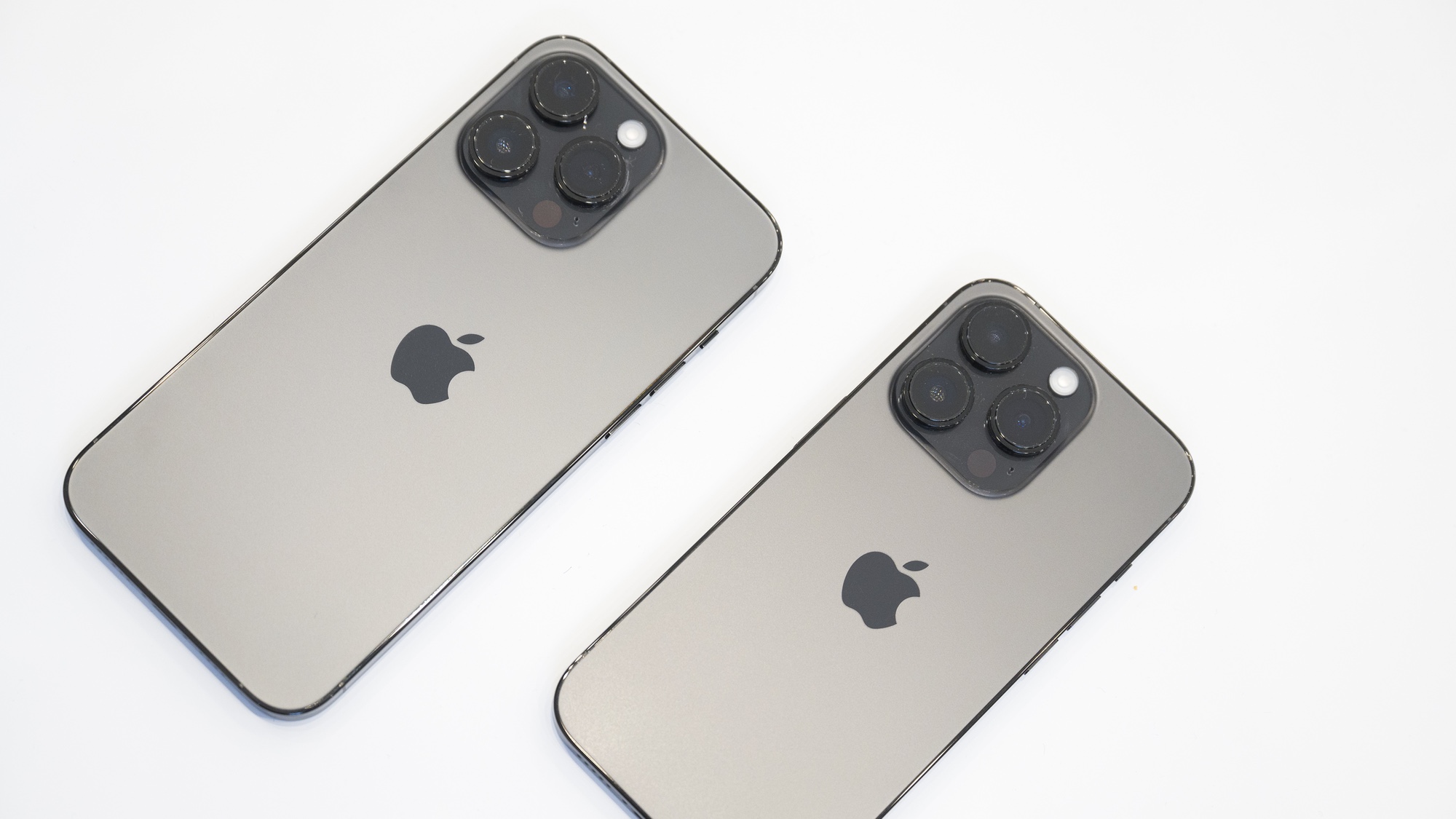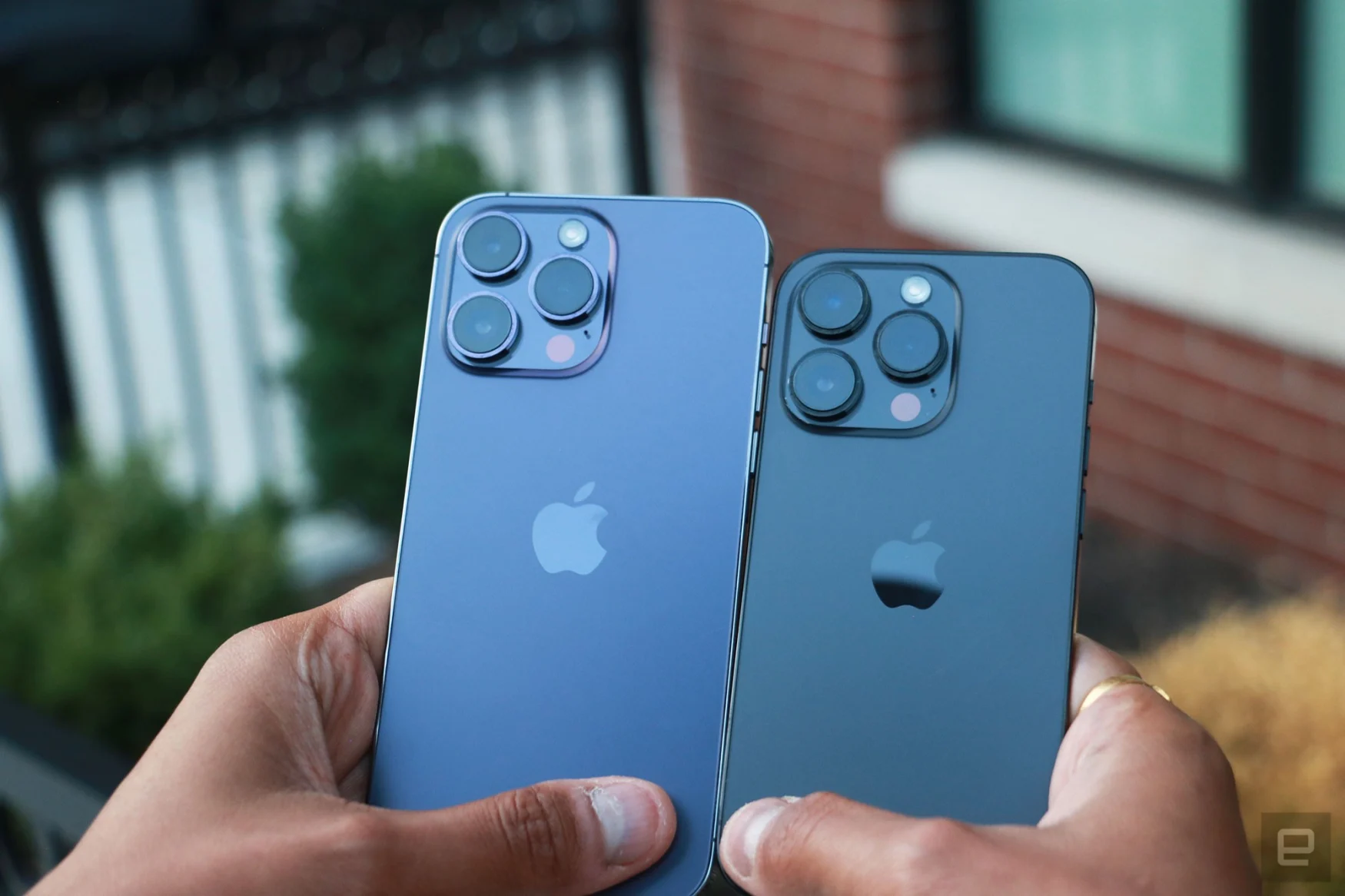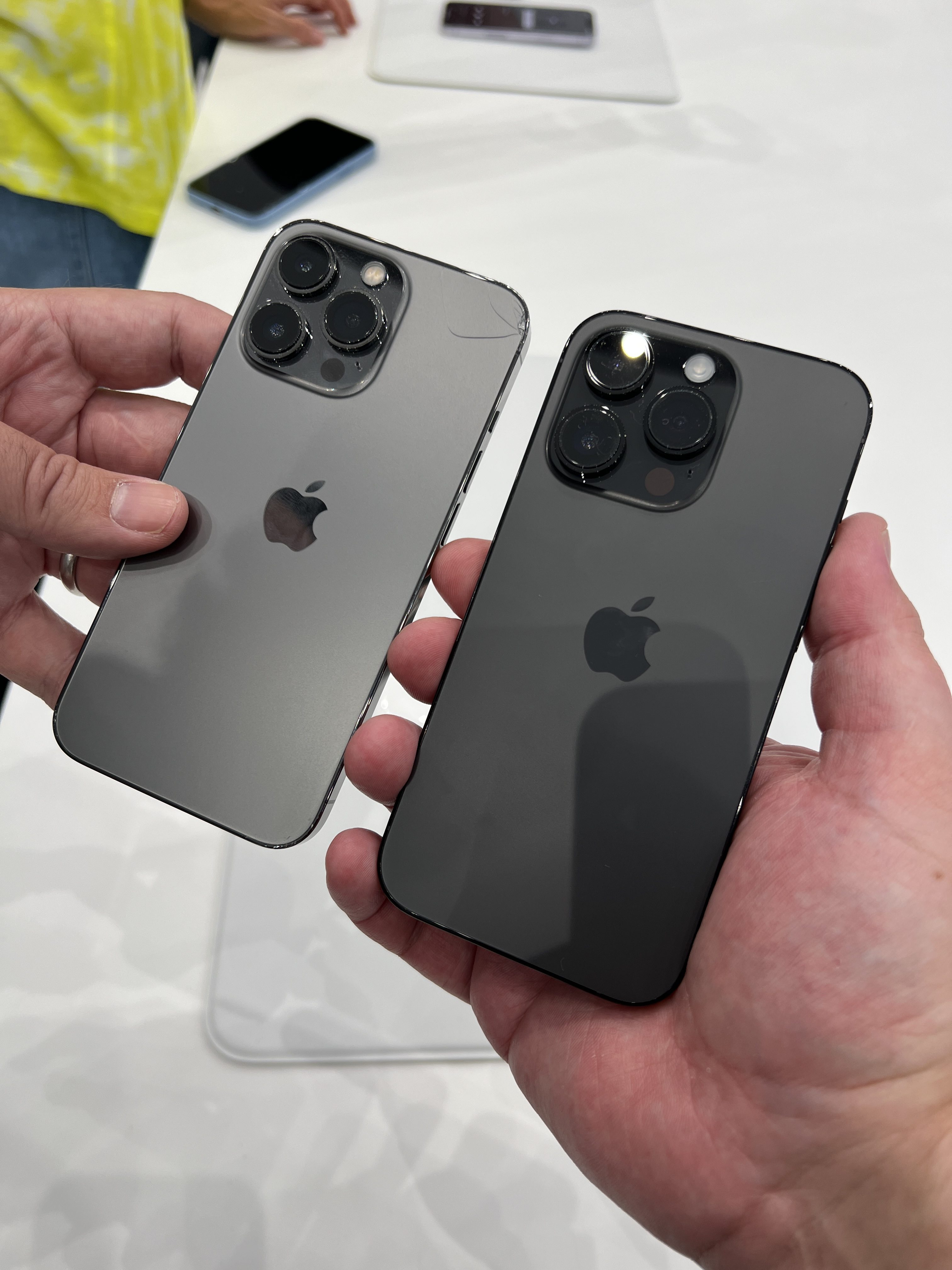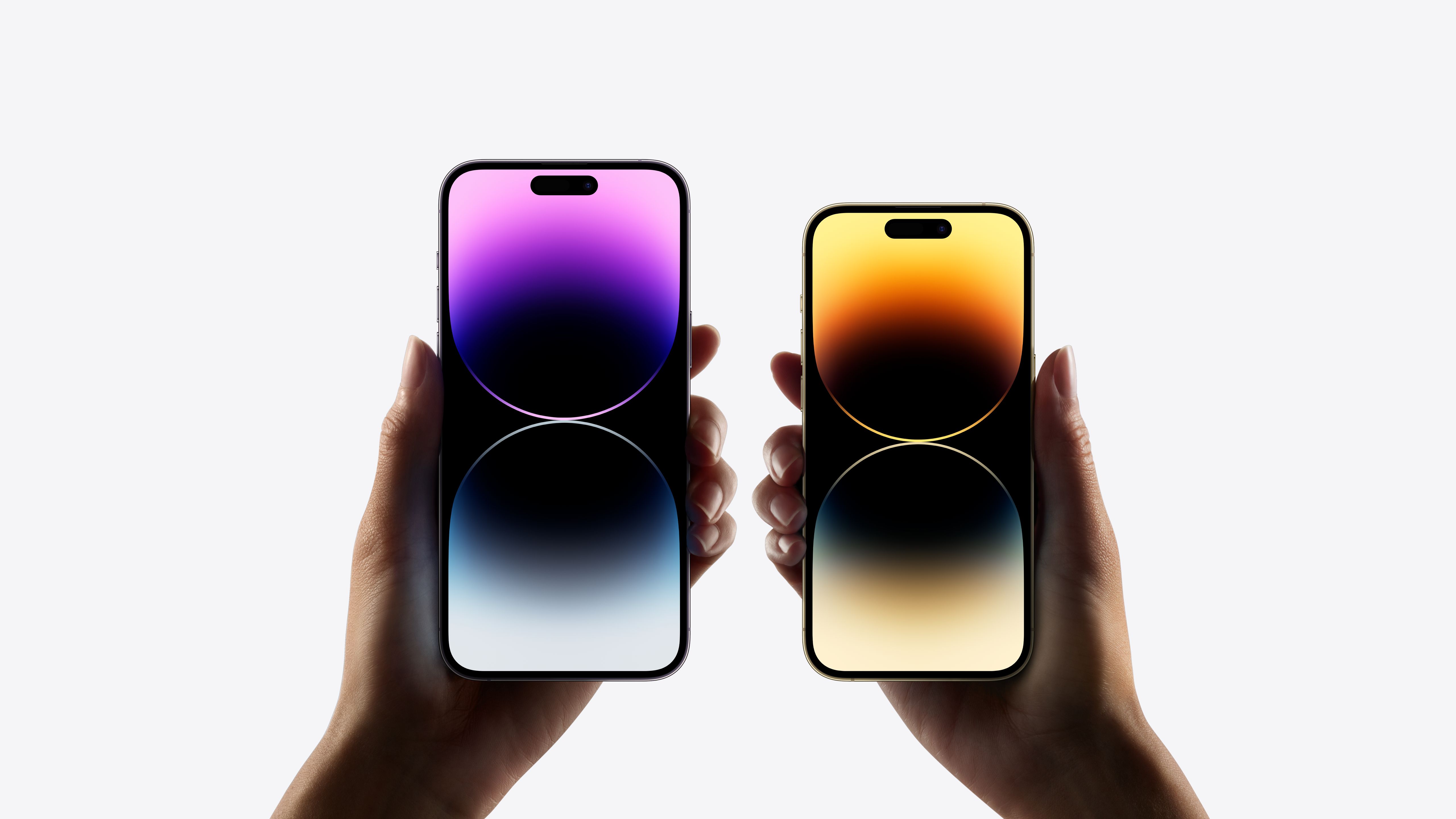Explore the differences between the iPhone 14 Pro and iPhone 14 Pro Max models. From design and performance to camera and battery life, this article provides a comprehensive comparison to help you choose the right device. Read more on GadgetsLand.
Innholdsfortegnelse
Introduction
The iPhone 14 Pro and iPhone 14 Pro Max are two of Apple's most powerful smartphones to date. Despite the release of the iPhone 15, these models continue to be popular choices for consumers. In this article, we will delve into the key differences between the two models to help you make an informed decision.
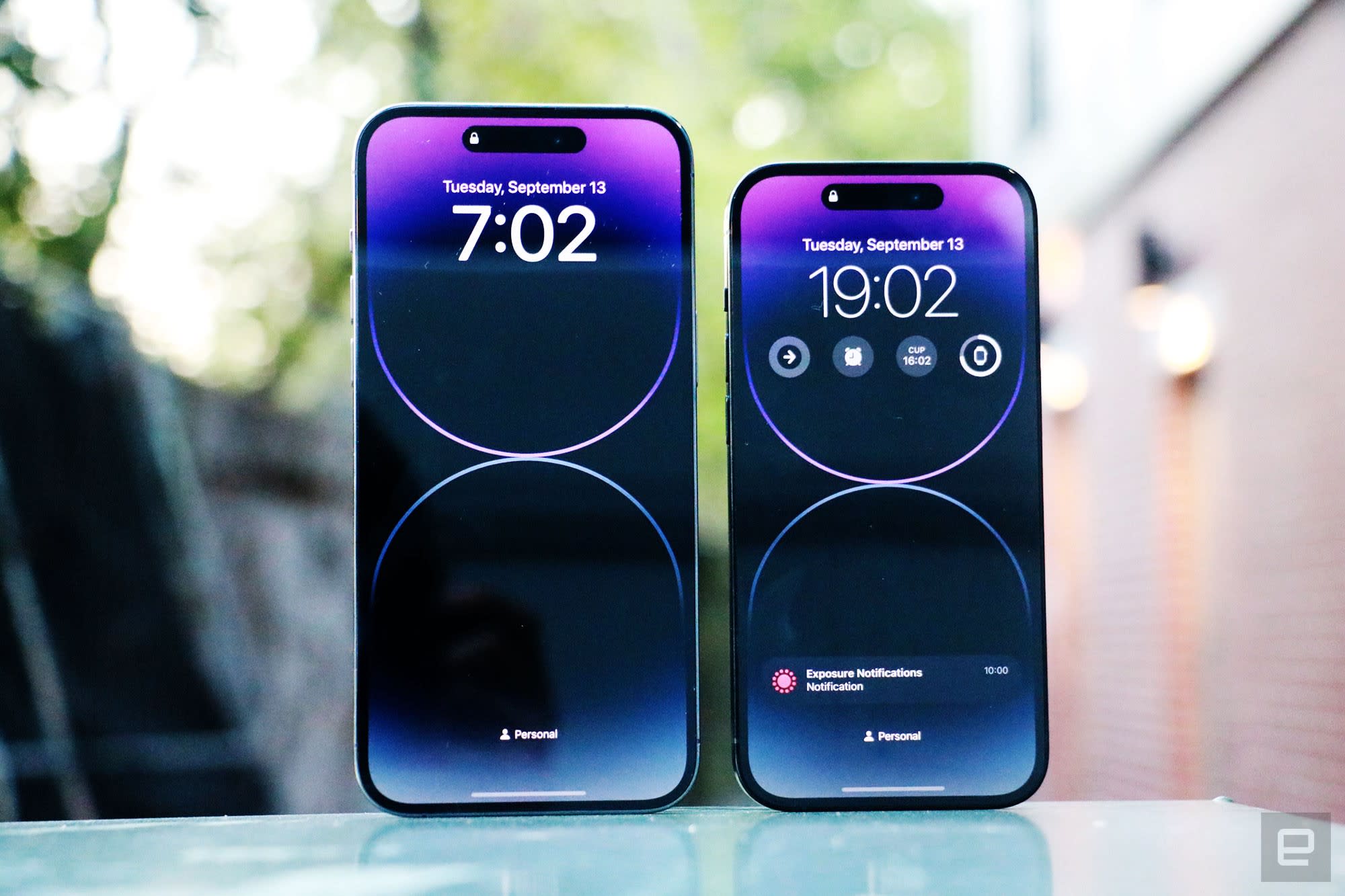
Design
The iPhone 14 Pro and iPhone 14 Pro Max share a similar aesthetic design. Both models feature swanky stainless steel rails and a matte finish on the back. However, the Pro models have an exclusive feature called the Dynamic Island, which is not present in other iPhones. The iPhone 14 Pro has a 6.1-inch display, while the Pro Max boasts a larger 6.7-inch screen. Both models offer Super Retina Pro XDR displays, but the Pro Max can occasionally achieve higher brightness levels. Additionally, the Pro Max's larger display may be less convenient for one-handed use.
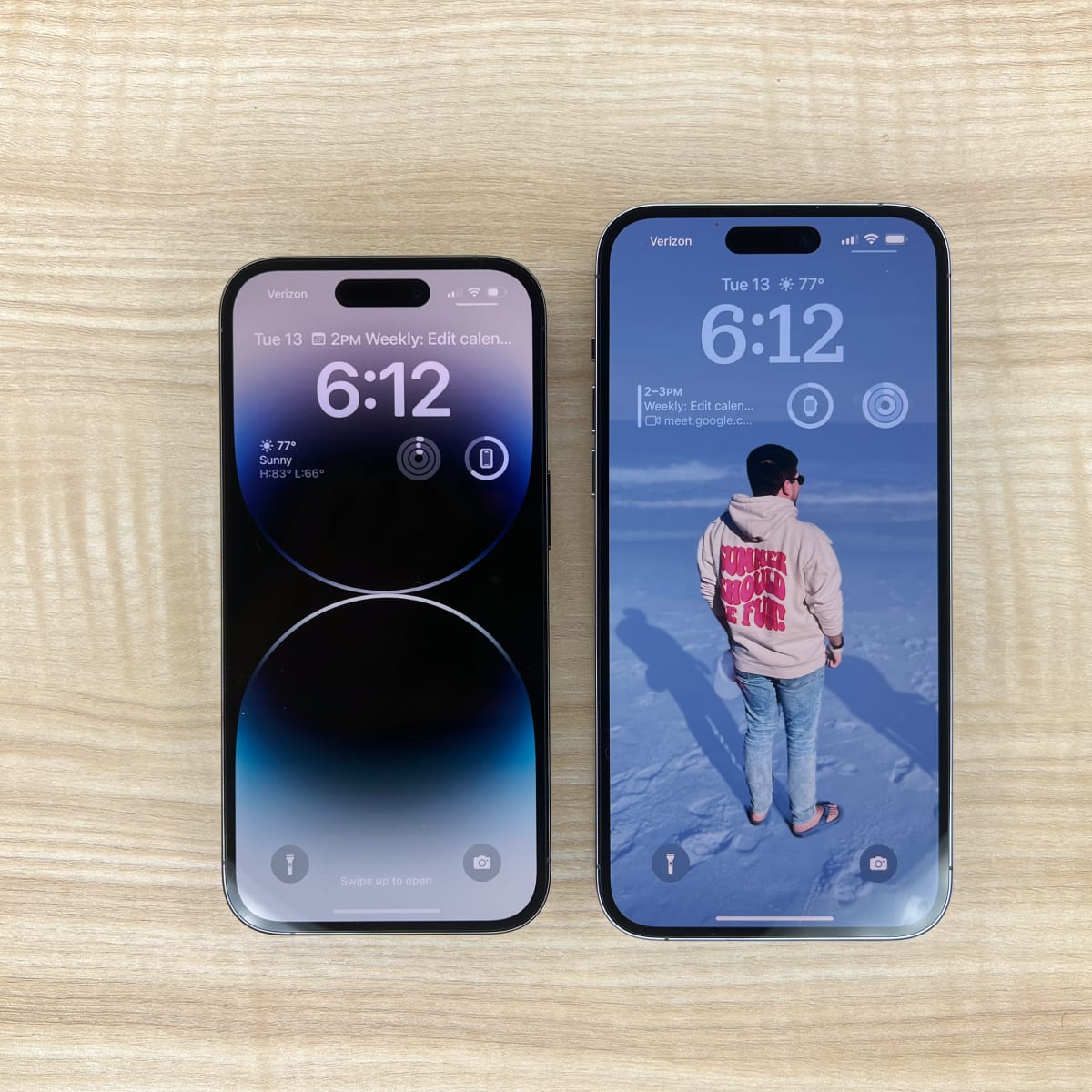
Performance
Both the iPhone 14 Pro and iPhone 14 Pro Max are equipped with Apple's A16 CPU, which provides exceptional processing power. Although the A17 Pro is slightly faster, the A16 is still highly capable. These models offer a fantastic user experience, with stunning displays and impressive camera setups for capturing high-quality photos and videos.
Se også
Price
The iPhone 14 Pro starts at $999, while the iPhone 14 Pro Max is priced at $1,099. The base models come with 128GB of storage, with the option to upgrade to 256GB, 512GB, or 1TB for an additional cost. When considering the price difference, it's important to assess your specific needs and whether the larger size and additional features of the Pro Max justify the extra investment.

Camera
The iPhone 14 Pro and iPhone 14 Pro Max feature an upgraded camera system compared to their predecessors. The main camera boasts a new 48-megapixel quad-pixel sensor, offering improved image quality. The ultra-wide camera also benefits from a larger 12-megapixel sensor with enhanced focus capabilities. These enhancements contribute to sharper and more detailed photos.

Battery and Display
The Pro Max offers some advantages in terms of battery life and display size. With its larger battery, the Pro Max can provide longer usage before requiring a recharge. Additionally, the Pro Max's 6.7-inch display, coupled with ProMotion technology, delivers a visually stunning experience. However, the Pro's 6.1-inch display is more manageable for one-handed use without compromising on display quality.
Se også
Conclusion
When comparing the iPhone 14 Pro and iPhone 14 Pro Max, it's important to consider your specific preferences and priorities. If you prioritize a larger display, longer battery life, and are willing to invest a bit more, the Pro Max may be the better choice for you. However, if you prefer a more compact device that is easier to handle with one hand, while still offering exceptional performance, the iPhone 14 Pro is an excellent option. Ultimately, both models offer top-of-the-line features and capabilities that will satisfy even the most demanding users.
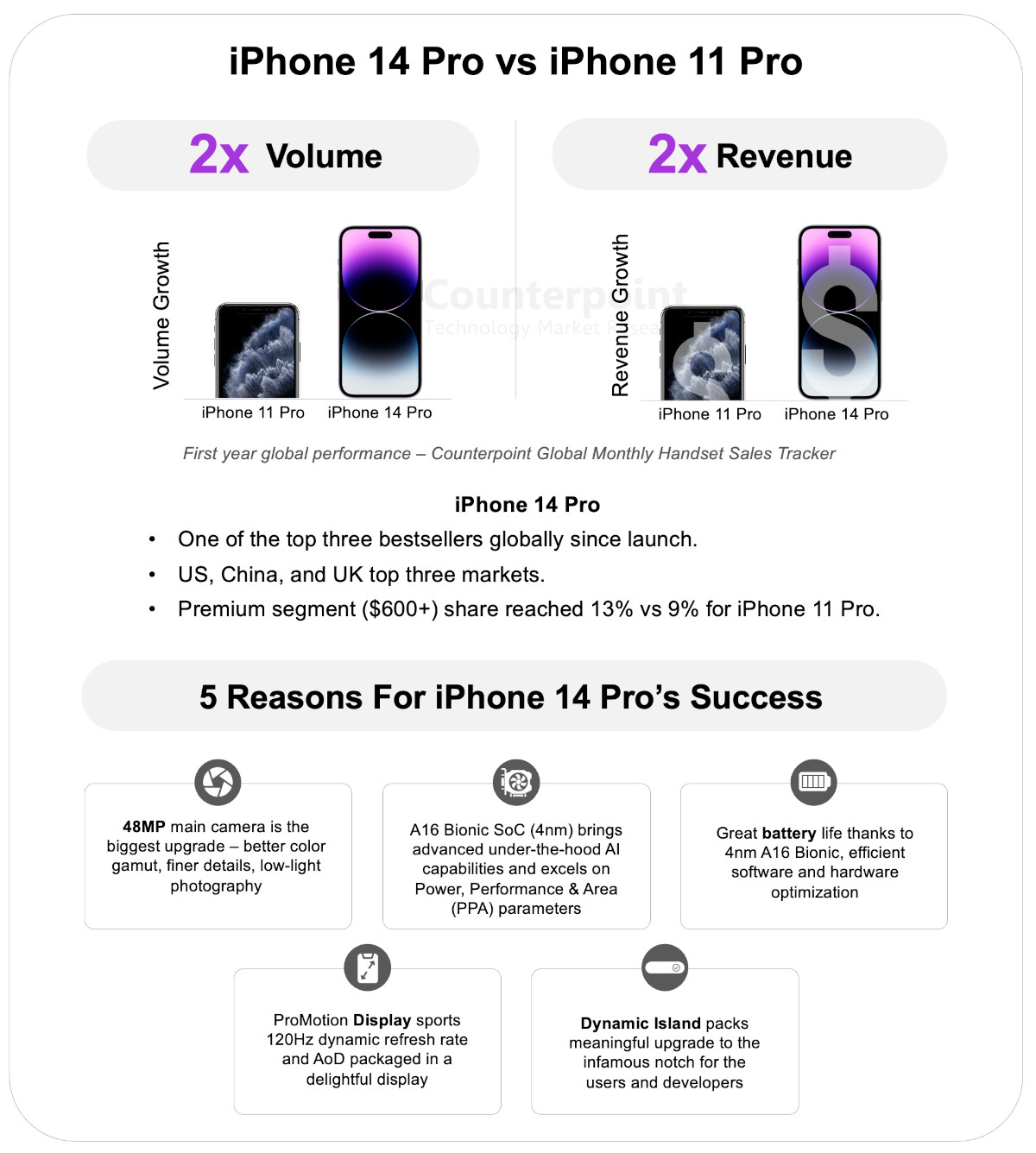
Hva vil Wiki fortelle oss?
The iPhone 14 Pro and iPhone 14 Pro Max are smartphones designed, developed, and marketed by Apple Inc. They are the sixteenth-generation flagship iPhones, succeeding the iPhone 13 Pro and iPhone 13 Pro Max. The devices were unveiled alongside the iPhone 14 and iPhone 14 Plus during the Apple Event at Apple Park in Cupertino, California, on September 7, 2022. Pre-orders for the iPhone 14 Pro and 14 Pro Max began on September 9, 2022, and were made available on September 16, 2022. Being, along with the iPhone 14 and 14 Plus, the last iPhones to use a Lightning port, the iPhone 14 Pro and 14 Pro Max were discontinued on September 12, 2023, following the announcement of their successors, the iPhone 15 Pro and 15 Pro Max, which replaces the Lightning port with USB-C to comply with European Commission regulations.
The design of the iPhone 14 Pro and iPhone 14 Pro Max is identical to older iPhone models, such as the iPhone 12 Pro and 13 Pro. The iPhone 14 Pro and 14 Pro Max are available in four colors: Silver, Space Black, Gold, and Deep Purple. Deep Purple replaced the Sierra Blue color used on the iPhone 13 Pro and iPhone 13 Pro Max.
The iPhone 14 Pro and Pro Max feature a new A16 Bionic system on a chip (SoC), built on TSMC's N4 fabrication process, superseding the A15 Bionic seen on the iPhone 13 and 13 Pro lineup, the 3rd generation iPhone SE, and the iPhone 14 and 14 Plus.
The camera sensors and lenses on the main and ultra-wide cameras have been upgraded. The main camera features a new 48-megapixel quad-pixel sensor that is 65% larger than the one on the iPhone 13 Pro. The ultra-wide camera features a new larger 12-megapixel sensor that has 100% focus pixels. The lens has also been improved for optical clarity and features a larger aperture.
The iPhone 14 Pro and Pro Max feature a Super Retina XDR OLED display with a typical maximum brightness of 1,000 nits. However, it can go all the way up to 1,600 nits while watching HDR videos, and 2,000 nits outdoors. The display has a refresh rate of 120 Hz and uses LTPO technology. The iPhone 14 Pro has a resolution of 2556×1179 pixels at 460 pixels per inch (ppi), while the Pro Max variant has a resolution of 2796×1290 pixels at 460 ppi. Both variants have an "always on display" feature, with an adaptive ProMotion 120 Hz refresh rate that can reduce down to 1 Hz to save battery life while in "always on" mode.
In addition to all the connectivity options offered on previous models, the iPhone 14 Pro and Pro Max can now use satellite connectivity to make calls or send texts in an emergency. The feature is marketed as "Emergency SOS". It uses the spectrum in L and S bands designated for mobile satellite services by ITU Radio Regulations. When an iPhone user makes an Emergency SOS via satellite request, the message is received by an orbiting satellite operated by Globalstar. The satellite then sends the message down to ground stations located across the globe.



